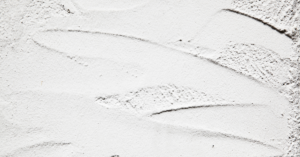A Brief Guide to Making a Stucco Wall

When you want a great option for your exterior, you want every wall to be a stucco wall!
We’ve talked up stucco plenty of times at this point. You probably already know it’s a versatile material that’s long-lasting and great for building exteriors. Not many surfaces can stand up to weather the way a stucco wall can. But knowing the benefits is useless if you don’t know how to install it, so let’s get into it, shall we?
Preparation and Planning
If you want to do the job correctly, it’s important to prepare thoroughly. Before any actual stucco is applied to a surface, there are a few checklist items you need to take care of:
Material Selection
Not every kind of stucco is the same! Just as a lot of cars might look great, it’s the quality of the materials that makes all the difference. The important thing to note here is that there are two primary types of stucco walls: Traditional and synthetic. Traditional is cement-based and known for its breathability. This makes it a great fit for a huge array of climates. On the other hand, a synthetic stucco wall offers better resistance to cracking.
Surface Inspection
Take the time to thoroughly inspect every surface you intend to apply stucco siding to. Make sure it’s free from contaminants like dirt or grease. If you find any of these blemishes, clean it (more on that below) and make sure the entire surface is dry before you begin the application process.
Gathering Tools
There’s no need to sit around and do nothing while you wait for those newly cleaned surfaces to dry. Gather all the tools you’ll need, like trowels, hawks, and other mixing tools. Of course you’ll need the stucco mix itself, but be prepared with metal lath or wire mesh as well as bonding agents.
Surface Preparation
There are a few things you still need to do before your stucco siding mixture finds its new home.
Cleaning the Surface
If you did come across any dirty spots during your inspection, you need to send those contaminants packing! We recommend using a pressure washer to effectively clean large surfaces quickly. As for the nooks and crannies, a stiff brush will work nicely.
Apply a Bonding Agent
This is a critical part of making sure the layers of the stucco wall actually stick together. Once you’re confident the surface is clean and dry, apply the bonding agent evenly across the area. Be sure to follow the manufacturer’s instructions!
Installing Lath
Metal lath or wire mesh will give the stucco a sturdy base to cling to. Make sure you secure it tightly to the work surface and remove any protrusions.
Mixing the Stucco
When you’re making the stucco mixture, make sure you’re adhering (no pun intended) to the instructions. When the correct amount of water, cement, sand, and other additives are mixed thoroughly, you’ll have a strong, durable mixture! To make sure you’ve achieved that sweet spot, perform a consistency check. Test your mixture by scooping it with a trowel. If it retains its shape without dripping off, you’ve found the winning formula.
Application Process
It’s finally time for the stucco installation! Here are the steps you should follow:
Scratch Coat
The first layer is known as the scratch coat. After applying it evenly across your surface with a trowel, use a scratcher tool to create horizontal grooves that will provide a good surface for the next coat of stucco to bond to.
Brown Coat
The second layer, known as the brown coat, helps to level the surface and provides additional strength to the stucco walls. Apply it evenly, using a straight edged tool to help keep it smooth. Once it’s applied correctly, it’ll act as a nice base for the final layer.
Finish Coat
This is it: The final layer of stucco! It’s the coat that gives your stucco application its visual appeal, and of course, provides a third layer of strength to the overall surface. Apply it thinly and evenly using a trowel. Once that’s done, it’s time for the fun part: creating textures! This is where you can experiment with different tools and techniques, so get creative and help your building express its personality!
Curing and Drying
The curing step is critical to ensuring your stucco wall is strong and durable. During this step, make sure you keep the stucco moist for several days so it can properly cure. We recommend periodically using water to mist the surface.
Once cured, the surface is finally ready to dry and take on its final form. This process takes several days, with weather conditions being significant factors. If there’s rain in the forecast, make sure you keep the surface protected.
Final Touches and Maintenance
Your stucco is finally applied and dried, and you want to add the finishing touches. Painting the surface can provide an extra layer of protection and, obviously, give it the color you prefer. If you want to take that protection a step further, you can always use a sealant to enhance moisture and stain resistance. Once that’s done and you’re happy with how your structure looks, make sure you give the stucco a little bit of TLC now and then. Taking time to clean dirt buildup and check for damage can prolong the life of your new stucco surface!
Conclusion
There are several key steps to creating a stucco surface that stands the test of time, but it’s well worth it! With proper planning and application practices, your stucco can be a durable shield on your building and look good doing it! While small repairs are simple enough for anyone to perform, we recommend using professional services for the bigger lifts. Get in touch with the committed team at Robey Stucco for solutions that stick!
